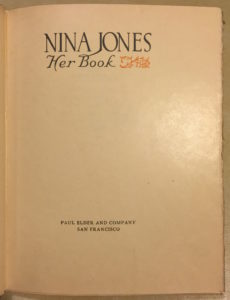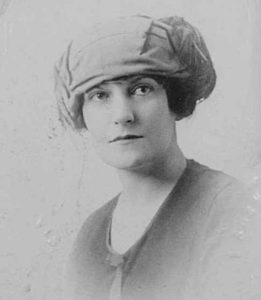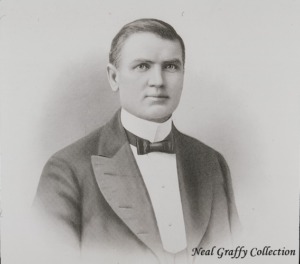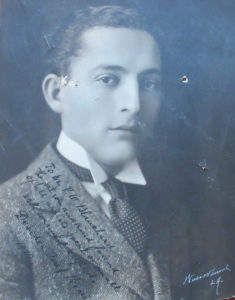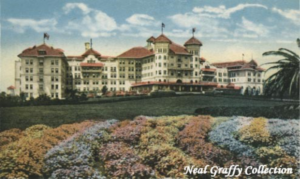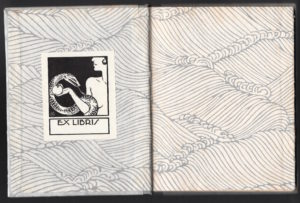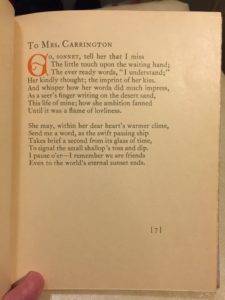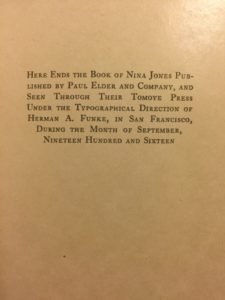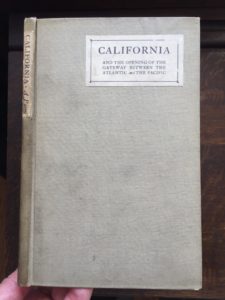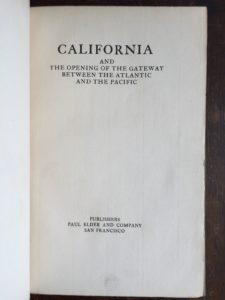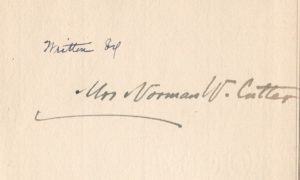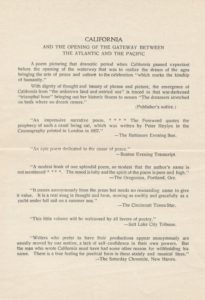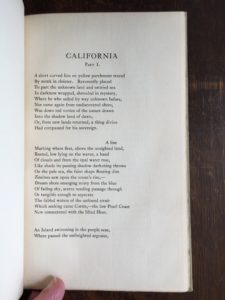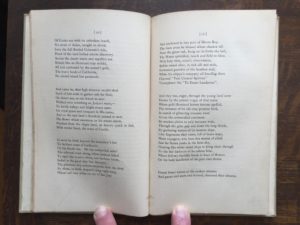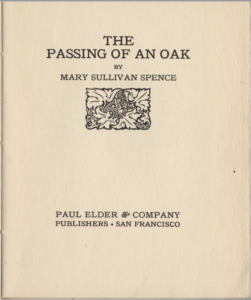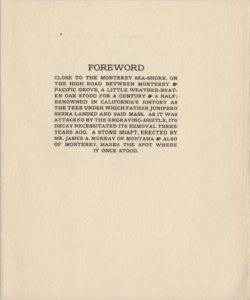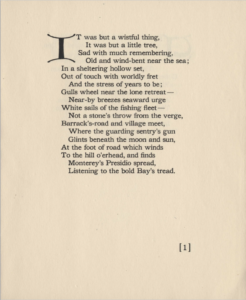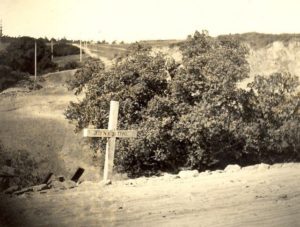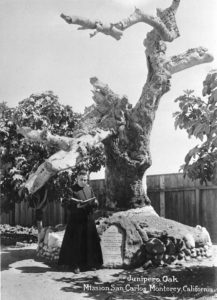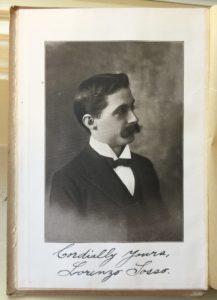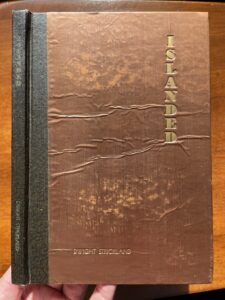
In early 1934, a monthly literary magazine called Dune Forum appeared out of Oceano, a tiny, unincorporated seaside community in San Luis Obispo County, California. Oceano had hitherto been known as the home of a utopian Theosophical religious community called Halcyon, founded in 1903. Dune Forum was sold at a select few of California’s literary hotspots, including Paul Elder’s bookstore, UC Berkeley and Stanford University, and bookstores in Santa Cruz, Carmel, Ojai, Santa Barbara, and Los Angeles. The magazine only lasted seven issues, but included contributions from such notables as poet Robin Lampson, musician John Cage, and poet John Varian of the Halcyon community.
The February 1934 issue of Dune Forum contained this note in a section called “Northern Lights:”
San Francisco never ceases to delight us. As this magazine is printed there, we have to attend its monthly rebirth, and each time we journey thither, further proofs of its fascination crowd in upon us, each with a new surprise. This trip is already full of memories. Mrs. Maflo [Mary Florence] Ryan gave a benefit reception for young Dwight Strickland, a cynical poet in the contemporary stream of defeatism, yet curiously remindful of the mauve decade. His book of verse, “Islanded” has recently been brought out by Paul Elder, and for much of its contents, is worthy of your attention. Better still if you could hear him recite his Swinburnianly modernistic lyrics. A born showman, this Strickland never misses a chance to flabbergast or charm, or otherwise capture the attention of his audience.1Dune Forum, vol. 1, no. 2, 15 Feb 1934, p56.
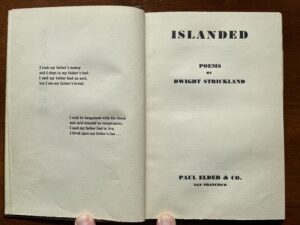
That same week, the Mill Valley Record reported:
Dwight Strickland, the young California poet whose work is earnestly noted by bay region people, is soon to tour the south, where he will appear before distinguished clubs in dramatic presentation of his latest volume of verse “Islanded.” He is to be the guest of and entertainer for the Chelsea Circle in San Francisco tomorrow night. Mr. Strickland expresses himself in highly colorful imagery and distinctive rhythms. In these two qualities, the mantel of Vachel Lindsay seems to have fallen upon him. Lindsay pioneered in a new style which won great acceptance. Strickland is receiving complimentary support from the press. A limited number of autographed copies of his work may be had at Paul Elder’s.2Mill Valley Record, Volume XXXV, Number 51, 9 February 1934

And in April, the Los Angeles Times noted:
From San Francisco comes young Dwight Strickland, whose volume of verse, “Islanded,” has been issued by Paul Elder. Mr. Strickland believes in the importance of reading verse aloud, and he follows Vachel Lindsay in this faith. But, unlike the midwestern poet, he reads from the work of other poets as well as from his own.3Los Angeles Times, 8 Apr 1934
Islanded was issued in at least three bindings: silver paper on boards with title and name stamped in black, cloth on boards without stamped title, and, most unusually, copper foil over boards with gold-stamped title and author—the only such binding that Paul Elder & Company ever issued. The poetry inside is often printed with the avant-garde typography pioneered by E. E. Cummings in the 1920s, and one imagines that our born showman’s reading style attempted to convey that typography to his listeners.

Due to financial difficulties, Paul Elder retired from publishing in 1918. At rare intervals afterwards, he issued an occasional title: three in the 1920s, and six in the 1930s. Presumably they were all vanity publications, but few records survive so it is difficult to be certain. When Islanded was published in 1933, it was the middle of the Great Depression, and Paul Elder still had money problems behind the scenes, so it’s hard to imagine Elder fronting the costs for this book, especially with the multiple cover designs.
Dwight Jensen Strickland was born in Niles, Michigan on 18 June 1907, the third of four children of the Rev. Arthur Strickland and Carolyn Jensen. Little is known about him aside from what can be pieced together by public documents. The family moved often, and as a boy Dwight also lived in Indiana, Rhode Island, and New Jersey. After his poetry reading tour in 1934, he moved to New York City, but in 1940 was living with his father in Philadelphia. In 1946, he married Louise I. Wetherby (1909-64) in California. Dwight Strickland died on 22 August 1963 in Los Angeles at the age of 56, and is buried alongside Louise at Forest Lawn Memorial Park in Glendale, California.
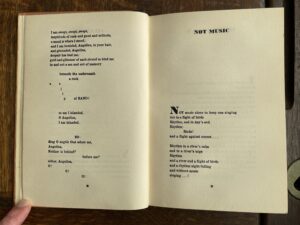
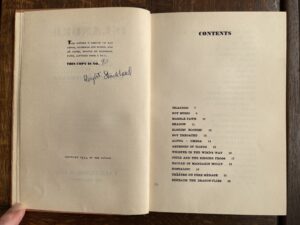
- 1Dune Forum, vol. 1, no. 2, 15 Feb 1934, p56.
- 2Mill Valley Record, Volume XXXV, Number 51, 9 February 1934
- 3Los Angeles Times, 8 Apr 1934

